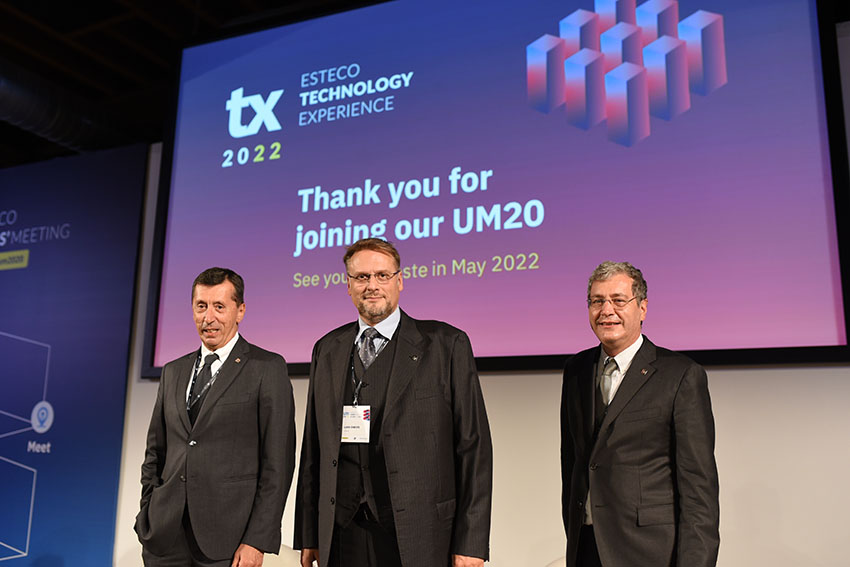ESTECO is an independent software provider, highly specialized in numerical optimization and simulation data management with a sound scientific foundation and a flexible approach to customer needs. Their technology brings modularity, ease of use, standardization, and innovation to the engineering design process. ESTECO’s smart engineering suite brings enterprise-wide solutions for design optimization, simulation and process data management (SPDM), process integration and automation. With 20 years’ experience, the company supports over 300 leading organizations in designing the products of the future, today.
Easy Engineering: What are the main areas of activity of the company?
ESTECO: At ESTECO we support design space exploration and simulation process and data management with our technology to make companies able to shorten product development time. With modeFRONTIER, our desktop solution, engineers can integrate any third parties solvers in a powerful simulation workflow, automate the execution, run optimization on top, get useful insights of the generated data with a rich set of analytics and visualization tools and choose the optimum solutions. Commonly, there are just a few experts in charge of managing the large amounts of simulation data that needs to be compared and validated by multiple departments. Collaboration and democratization are fundamental to empower more engineers to take full advantage of simulation technology. VOLTA, our enterprise web platform for simulation process and data management (SPDM) and design optimization, is designed specifically for this purpose: it makes every simulation process a collaborative, enterprise-wide experience to deliver better products, faster.
E.E: What’s the news for 2020 about new products?
ESTECO: The 2020 ESTECO products updates mainly focused on evolving the user experience in optimization while keeping the process simple. Autonomous design space exploration and optimization became available both in VOLTA enterprise platform and in modeFRONTIER desktop solution. Users can rely on the intelligent algorithms without needing to make any settings whenever they approach an engineering problem or have to optimize their designs.
Through its web applications, the VOLTA platform has also continuously evolved to expand the usage of engineering simulation across teams and to offer an ever easier to use optimization experience. VOLTA Planner, the web environment for design exploration and optimization, provides an innovative user friendly approach to apply and execute several optimization strategies without dealing with the process automation complexity. Also, VOLTA Advisor, the advanced data analysis environment, also includes a smart visualization dashboard that allows users to take notes and add images to make data easier to read. This streamlines the comparison and evaluation of different design solutions and supports analysis with information to aid easy understanding of the simulation results

VOLTA Simulation Data Management enhanced capabilities allow users to directly interact with a 3D model to check whether a design is reasonable or not rather than only relying on charts and 2D reports to make decisions.
Another step towards democratization in the simulation process has been achieved with the new VOLTA Application Programming Interfaces (APIs). Companies can now unleash the full power of enterprise data by securely connecting their different apps, platforms, services, and systems with the VOLTA platform. This enables non-simulation experts, suppliers, and even clients to interact with the engineering data they need, instead of getting lost in the complexity of the whole simulation process. In fact, different users can directly interact with VOLTA through a simplified web interface.
Along with new capabilities related to the multi-objective robust design optimization to predict product performance, modeFRONTIER has enhanced its process integration and automation capabilities with an extended array of direct integration nodes. Engineers and R&D professionals can now directly integrate Python node in modeFRONTIER and create a custom workflow to meet their needs for a specific simulation design process. Architects and structural engineers can also benefit from the seamless integration of Grasshopper, a graphical plug-in for Rhinoceros 3D modelling tools. modeFRONTIER gives them the opportunity to use advanced algorithms to optimize project-wide build parameters.
E.E: At what stage is the market where you are currently active?
ESTECO: With over 20 years of experience in numerical optimization, ESTECO has a consolidated presence in the Simulation and Analysis market according to CIMDATA Inc., the leading global PLM strategic management consulting and research firm. Nowadays, the big players, in our market segment, increasingly focus on providing comprehensive modelling and simulation platforms where design space exploration and simulation process and data management technology are part of a global solution for enterprise management. To achieve that, they have started to acquire many software providers to enlarge their simulation portfolio offer. Although these tools may not be properly integrated between each other, resulting in a disconnected, difficult to manage simulation process. ESTECO’s key advantage is being independent, we are not part of any large corporation or group of companies. This allows us to establish a strong network of first-class partnerships with independent software and hardware vendors. Our belief is that cooperation is essential to effectively respond to the customers’ needs. Thanks to these alliances, our company can develop and maintain a state-of-the-art industrial technology, fully integrated with any commercial and proprietary parametric software.

E.E: What can you tell us about market trends?
ESTECO: Global industry trends such as autonomous & ADAS, electric mobility, light weighting, additive manufacturing, digital twin and machine learning to name a few, are making virtual prototyping and simulation practices fundamental to enable digital transformation in product development. As virtual models are becoming the norm in all stages of product design, and the benefits of simulation are extended beyond the domain experts, the amount of data at the hands of engineers has grown exponentially. As a result, engineering organizations’ interest in Simulation Process and Data Management has significantly increased in the last few years. Companies such as ESTECO, are currently making a huge effort in developing software solutions to enable more engineers to take advantage of simulation and optimization techniques. This allows them to accomplish the shift towards an agile approach to product development to respond to the pressure of shorter product cycles and shrinking time to market.

